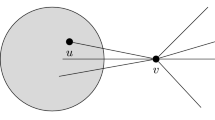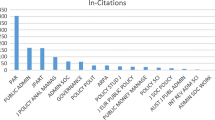Abstract
Elucidating the pattern of links within social networks is a challenging problem. Of particular difficulty is determining the existence of links in those groups that take active measures to conceal their internal connections, such as terrorist or criminal organizations where conventional social network analysis data-gathering techniques cannot be applied. Network representations of such organizations are useful, because they often represent a useful point of departure in thinking both about the potential capabilities of organizations and how to conduct effective measures to counter them. Developing an effective process for constructing such network representations from incomplete and limited data of variable quality is a topic of much current interest. Here, a method based on Bayesian inference is presented that probabilistically infers the existence of links within a social network. It is tested on data from open source publications. Additionally, the method represents a possible approach to dynamically modelling networks, as it is feasible to calculate how a network will reconfigure following an intervention.



Similar content being viewed by others
References
Abram PJ and Smith JD (2004). Modelling and analysis of terrorist network disruption. MSc thesis, Cranfield University, Shrivenham.
Albert R and Barabasi AL (2002). Statistical mechanics of complex networks. Rev Mod Phys 74: 47–97.
Borgatti SP, Everett MG and Freeman LC (2002). UCINET 6.29 for Windows: Software for Social Network Analysis. Analytic Technologies: Harvard.
Carley KM, Lee J and Krackhardt D (2001). Destabilizing networks. Connections 24(3): 31–34.
Farley JD (2003). Breaking Al Qaeda cells: A mathematical analysis of counter-terrorism operations. Stud Confl Terror 26: 399–411.
Fellman PV and Wright R (2004). Modeling terrorist networks: Complex systems at the mid-range. Available online.
Irwin C, Roberts C and Mee N (2002). Counter terrorism overseas. Dstl Report, Dstl/CD053271/1.1.
Jansen R et al (2003). A Bayesian networks approach for predicting protein–protein interactions from genomic data. Science 302: 449–451.
Krebs V (2002). Uncloaking terrorist networks. First Monday 7(4): http://www.Firstmonday.org/issues/issue7_4/Krebs/index.html, November 2006.
Newman MEJ (2003). The structure and function of complex networks. SIAM Rev 45: 167–256.
Scott J (2000). Social Network Analysis: A Handbook. Sage Publications: London.
Wasserman S and Faust K (1994). Social Network Analysis: Methods and Applications. Cambridge University Press: Cambridge.
Acknowledgements
We thank the referees for many thoughtful and helpful comments.
Author information
Authors and Affiliations
Corresponding author
Rights and permissions
About this article
Cite this article
Rhodes, C., Keefe, E. Social network topology: a Bayesian approach. J Oper Res Soc 58, 1605–1611 (2007). https://doi.org/10.1057/palgrave.jors.2602352
Received:
Accepted:
Published:
Issue Date:
DOI: https://doi.org/10.1057/palgrave.jors.2602352




